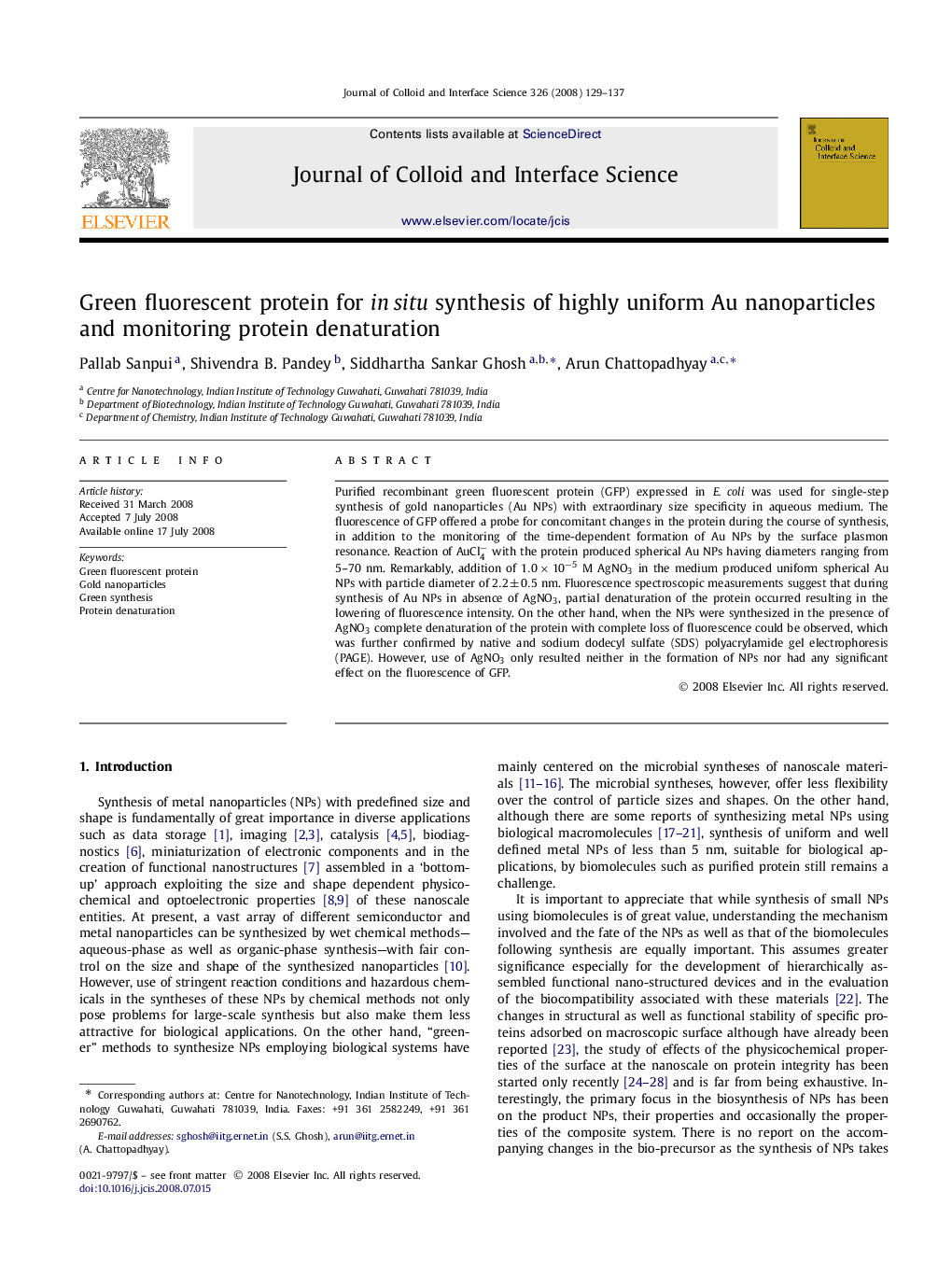| Article ID | Journal | Published Year | Pages | File Type |
|---|---|---|---|---|
| 610882 | Journal of Colloid and Interface Science | 2008 | 9 Pages |
Purified recombinant green fluorescent protein (GFP) expressed in E. coli was used for single-step synthesis of gold nanoparticles (Au NPs) with extraordinary size specificity in aqueous medium. The fluorescence of GFP offered a probe for concomitant changes in the protein during the course of synthesis, in addition to the monitoring of the time-dependent formation of Au NPs by the surface plasmon resonance. Reaction of AuCl−4 with the protein produced spherical Au NPs having diameters ranging from 5–70 nm. Remarkably, addition of 1.0×10−5 M1.0×10−5 M AgNO3 in the medium produced uniform spherical Au NPs with particle diameter of 2.2±0.5 nm2.2±0.5 nm. Fluorescence spectroscopic measurements suggest that during synthesis of Au NPs in absence of AgNO3, partial denaturation of the protein occurred resulting in the lowering of fluorescence intensity. On the other hand, when the NPs were synthesized in the presence of AgNO3 complete denaturation of the protein with complete loss of fluorescence could be observed, which was further confirmed by native and sodium dodecyl sulfate (SDS) polyacrylamide gel electrophoresis (PAGE). However, use of AgNO3 only resulted neither in the formation of NPs nor had any significant effect on the fluorescence of GFP.
Graphical abstractSmall and uniform Au nanoparticles of less than 5 nm are synthesized by GFP in presence of AgNO3 with concurrent denaturation of the protein.Figure optionsDownload full-size imageDownload as PowerPoint slide
